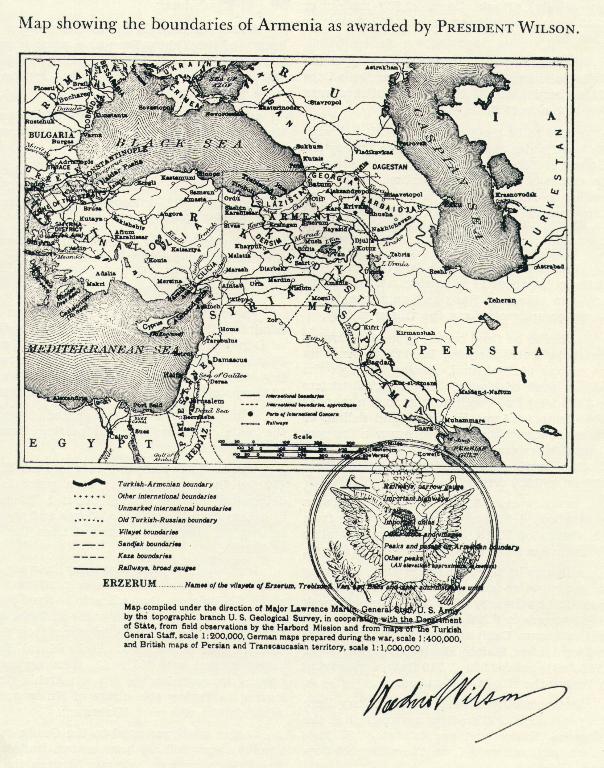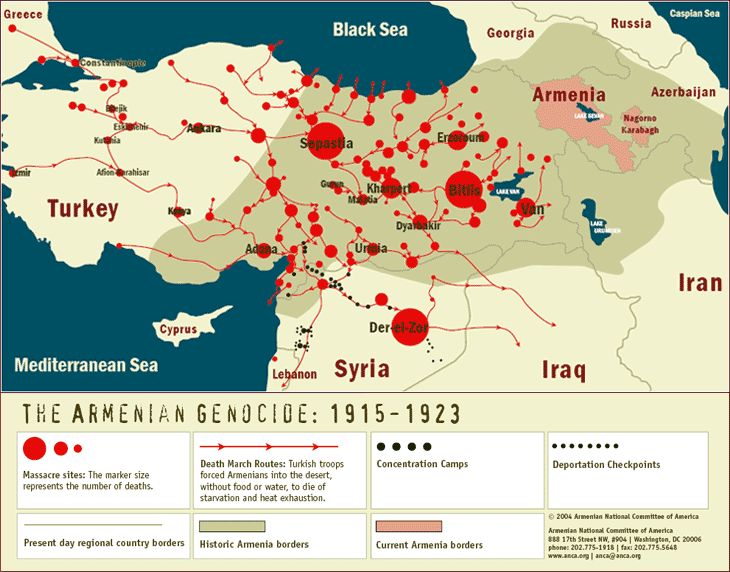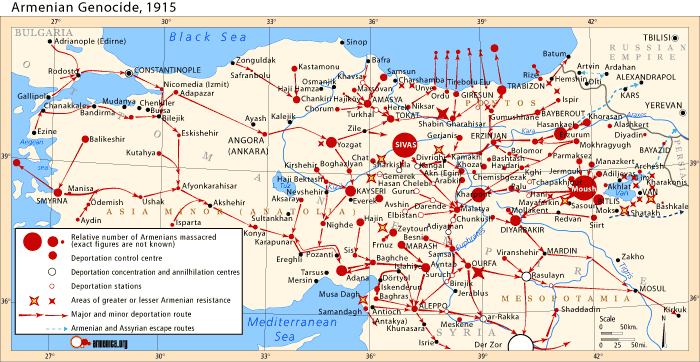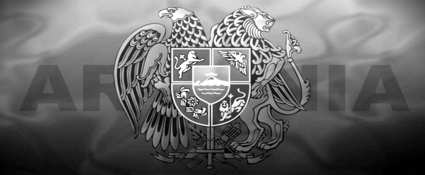|
|
|
|
| |
| |
| |
| |
| |
| |
| |
| |
| |
| |
| |
| |
| |
| |
| |
| |
|
|
| |
| |
| |
| |
| |
| |
| |
|
|
| |
| |
| |
| |
| |
| |
| |
| |
| |
|
|
|
|
| |
| |
| |
| |
| |
| |
| |
| |
| |
| |
| |
| |
| |
| |
| |
| |
|
|
| |
| |
| |
| |
| |
| |
| |
|
|
| |
| |
| |
| |
| |
| |
| |
| |
| |
| |
|
|
|
|
| |
| |
| |
| |
| |
| |
| |
| |
| |
| |
| |
| |
| |
| |
| |
| |
|
|
| |
| |
| |
| |
| |
| |
| |
|
|
| |
| |
| |
| |
| |
| |
| |
| |
| |
| |
| |
| |
|
|
| |
|
|
| |
| |
| |
| |
| |
| |
| |
| |
| |
| |
| |
| |
| |
Citation[citation
needed]
A citation or
bibliographic citation is a reference to a book,
article, web page, or other published item with
sufficient detail to identify the item uniquely.[citation
needed]
Unpublished writings or speech, such as working
papers and personal communications, are also
sometimes cited. Citations are provided in scholarly
works, bibliographies, and indexes. The word
citation may also mean the act of citing a work,
that is, providing a reference to the work in the
form of a bibliographic citation.[original
research?]
Citations are used in scholarly works to
give credit to or acknowledge the influence of
previous works. Citations permit readers to put
claims to the test by consulting earlier works.
Authors often engage earlier work directly,
explaining why they agree with, or differ from,
earlier views. Ideally, sources are primary (first-hand)
and recent.
Varying rules and practices
for citations apply in scientific citation, legal
citation, theological citation, prior art, patent
law, and copyright law. Definitions of plagiarism,
uniqueness, innovation, trustworthiness, and
reliability vary so widely among these fields that
the use of citations has no simple common practice.
Citations may be made in
the body of text as of paparenthetical citations, in
footnotes at the bottom ges, or in endnotes at the
end of a document. They may also be listed in a
“works cited” page or section, in a bibliography,
or in a list of references.
The recording, use, and
reuse of citations on computers is facilitated by
reference management software, also known as
citation management software.
Citation indexes list
published citations between various works. In
addition to being used for bibliographic discovery,
they are used in bibliometrics for citation analysis
and the calculation of citation impact.
|
| |
| |
|
|
| |
| |
| |
| |
| |
| |
| |
|
|
| |
| |
| |
| |
| |
| |
| |
| |
| |
| |
| |
| |
| |
| |
| |
| |
| |
| |
| |
| |
| |
| |
| |
|
|
| |
| |
| |
| |
| |
| |
| |
| |
| |
| |
| |
| |
| |
| |
| |
| |
|
|
|
|
| |
| |
| |
| |
| |
| |
| |
|
|
| |
| |
| |
| |
| |
| |
| |
| |
| |
| |
| |
| |
| |
| |
| |
| |
| |
| |
| |
| |
| |
| |
| |
|
|
| |
| |
| |
| |
| |
| |
| |
| |
| |
| |
| |
| |
|
|
|
|
| |
| |
| |
| |
| |
| |
| |
| |
| |
| |
| |
| |
| |
| |
| |
| |
| |
| |
| |
| |
| |
|
|
| |
| |
| |
|
|
| |
| |
| |
| |
| |
| |
| |
| |
| |
| |
| |
| |
|
|
| |
| |
| |
|
|
| |
| |
| |
| |
| |
| |
| |
| |
| |
| |
|
|
|
|
| |
| |
| |
| |
| |
| |
| |
| |
| |
|
|
| |
|
Wilsonian Armenia border |
 |
|
|
| |
| |
| |
| |
| |
|
|
| |
| |
| |
|
|
| |
| |
| |
| |
| |
| |
| |
|
|
I should like to see any power in
this world destroy this race, this small tribe of unimportant people
whose history is ended, whose wars have been fought and lost, whose
structures have crumbled, whose literature is unread, whose music is
unheard, and whose prayers are no more answered.
Go ahead, destroy
this race! Destroy Armenia! See if you can do it.
Send them from
their homes into the desert. Let them have neither bread nor water.
Burn their homes and churches.
Then, see if they will not laugh
again, see if they will not sing and pray again. For when two of
them meet anywhere in the world, see if they will not create a New
Armenia.
-William Saroyan
THE
ARMENIAN GENOCIDE
Summary of Events Leading up
to the Genocide
Somewhat surprisingly
to many, Armenians and Turks lived in relative harmony
in the
Ottoman Empire
for centuries. Armenians were known as the "loyal
millet". During these times, although Armenians were not
equal and had to put up with certain special hardships,
taxes and second class citizenship, they were pretty
well accepted and there was relatively little violent
conflict. Things began to change for a number of
reasons. Nationalism, a new force in the world, reared
its head and made ethnic groupings self-conscious, and
the Ottoman Empire began to crumble. It became known as
"the sick man of Europe" and the only thing holding it
together was the European powers' lack of agreement on
how to split it up.
As other Christian minorities
gained their independence one by one, the Armenians
became more isolated as the only major Christian
minority. Armenians and Turks began to have conflicting
dreams of the future. Some Armenians began to call for
independence like the Greeks and others had already
received, while some Turks began to envision a new
Pan-Turkic empire spreading all the way to Turkic
speaking parts of Central Asia. Armenians were the only
ethnic group in between these two major pockets of
Turkish speakers and the nationalist Turks wanted to get
rid of them altogether.
As European powers began to ask
for assurances that Armenians receive better treatment,
the government began to treat the Armenians worse and
worse. From 1894-6 hundreds of thousands of Armenians
died in the Hamidian Massacres
ordered by Sultan Abdul Hamid II.
A coup by 'progressive' Young
Turks in 1908 replacing the Sultans government was
supported by Armenians. Unfortunately, promised reforms
never came, and in fact a triumvirate of extreme Turkish
nationalists took complete dictatorial control,
Enver,
Jemal
and
Talat.
It was they who masterminded the plan to completely
eradicate the Armenian race in a step towards fulfilling
their pan-Turkic dreams.
The Turkish massacres of
Armenians in 1894, 1895, 1896, and 1909 were still fresh
in their minds.
|
|
Hamidian massacres
During the long
reign of Sultan Hamid, unrest and rebellion occurred in many
areas of the Ottoman Empire. One of the most serious of
these incidents occurred in some
Armenian populated
parts of Anatolia. Although the Ottomans had crushed other
revolts in the past, the harshest measures were directed
against the Armenian community. They observed no distinction
between the nationalist
dissidents and the
Armenian population at large, and massacred them with brutal
force.However, this occurred in the 1890s, at a time when the
telegraph could spread news around the world and when the
Christian European
powers were vastly more powerful than the weakening Ottoman
state.
|
Political cartoon
portraying Sultan Hamid as a butcher for his harsh
actions against the Ottoman Armenians
|
|
Events leading to the
massacres
The origin of
Armenian unrest can be traced, in large part, to
the success of
Imperial Russia
in the Russo-Turkish War,
1877-78.
At the end of the war, based on the
Treaty of San Stefano
the Ottoman government had to give away a large
part of territory (including the cities of
Kars
and Batumi)
to the Russians. The Russian government claimed
they were the supporters of the beleaguered
Christian communities within the Ottoman Empire
and clearly, the Russians could now beat the
Ottomans. The Treaty of Berlin
- which reduced the magnitude of Russia's gains
on the other side of the Black Sea
- stated that the Ottoman government had to give
legal protection to the Christian Armenians, but
in the real world, the treaty's protections were
not implemented. Template:History of Armenia Template:Armenian
Genocide
The combination of Russian military
success, clear weakening of Ottoman power, and
hope that one day all of the Armenian territory
might be ruled by Russia led to a new
restiveness on the part of the Armenians still
living inside the Ottoman Empire. Added to this
was the fact that the Ottomans never applied
justice evenly in disputes between Christians
and Muslims (see Dhimmi).
Starting around 1890
the Armenians began clamoring to obtain the
protections promised them at Berlin.
Unrest occurred in 1892
at Marsovan
and in 1893
at Tokat.
Armenians wanted reforms in the Ottoman Empire
and an end to the discrimination imposed upon
them, with demands for the right to vote and the
establishment of a constitutional government. A
near revolt occurred in the
Sassoun
Mountains of Bitlis Province.
Armenian
peasants refused to pay the Kurdish
incremental taxes, a double taxation system
imposed on the Armenians by Kurdish chieftains.
In 1892, the governor of the
Mus district
in Bitlis Province
encouraged Armenian resistance claiming that the
Armenians: 'Couldn't serve two masters at the
same time.'
Hamid's response
In response to
the resistance in Sassoun, the Turkish governor
of Muş responded by inciting the local Muslims
against the Armenians.
The historian Lord Kinross
claims that this was often achieved by gathering
Muslims in a local mosque and claiming that the
Armenians had the aim of "striking at Islam.
The Sultan, Abdul Hamid II,
sent the Ottoman army into the area and also
armed groups of Kurdish insurrectionists.
The violence spread and affected most of the
Armenian towns in the Ottoman empire. The worst
atrocity occurred when the cathedral of Urfa, in
which three thousand Armenians had taken refuge,
was burned.
The historian Osman Nuri,
in the second volume of his three-volume
biography of Abdul Hamid, accused Sultans
military contingent of 'torching and killing
many people.'
1896 Bank Takeover
On August 26
1896
a group of Armenian revolutionaries
raided the headquarters of the Ottoman Bank
in Istanbul.
Guards were shot and more than 140 staff members
were taken hostage - all in an attempt to gain
international attention for the plight of
Armenians in the Ottoman Empire. Template:Main
Massacres
In response, tens
of thousands of Armenians were massacred, both
in Istanbul and elsewhere in the Ottoman Empire.
Abdul Hamid's Private First Secretary wrote in
his memoirs about Abdul Hamid that he 'decided
to pursue a policy of severity and
terror
against the Armenians, and in order to succeed
in this respect he elected the method of dealing
them an economic blow ... he ordered they
absolutely avoid negotiating or discussing
anything with the Armenians and to inflict upon
them a decisive strike to settle scores.'
The
killings occurred from 1895
until 1897.
In that last year, Sultan Hamid declared that
the Armenian question was closed. All the
Armenian revolutionaries had either been killed,
or had escaped to Russia. The Ottoman government
closed Armenian societies and restricted
Armenian political movements.
Death toll
Most estimates of
number of victims run from 80,000 to 300,000.
-
The
British ethnographer William Ramsay,
who visited the Ottoman empire for his own
studies, estimated that from 1894
to 1897, 200,000 Armenians were killed.
-
Armenophile Johannes Lepsius estimated more
than 89,000 dead.
[citation
needed]
-
The
German government estimated that up to December 20,
1895,
80,000 Armenians were killed.
[citation
needed]
-
The
British Ambassador White, based on the data
submitted to him by British consuls,
estimated that up to early December 1895,
100,000 Armenians were killed.
[citation
needed]
-
The
German author, E. Jackh (a German Foreign
ministry operative and Turkophile estimated
that 200,000 Armenians were killed, 50,000
expelled and one million pillaged.
[citation
needed]
-
R. J. Rummel,
a professor who coined the term democide,
estimated that 15,000 Armenians were killed
by Sultan Hamid.
-
The
most complete figures covering the entire
era from 1894 to 1897 were probably provided
by the French historian,
Pierre Renouvin,
the President of the Commission in charge of
assembling and classifying French diplomatic
documents. In a volume based on
authenticated documents, he stated that
250,000 Armenians were killed.
[citation
needed]
-
Armenian and other estimates run from
250,000 dead to as high as 350,000 dead.
-
Turkish estimates run from 20,000 to 30,000
killed.
These
events are recalled by the Armenians as the "Great
Massacres".
The Armenians believed the Hamidian
measures proved the capacity of the Turkish
state to carry out a systematic policy of murder
and plunder against a minority population. The formation of Armenian revolutionary groups began
roughly around the end of the Russo-Turkish War
of 1878 and intensified with the first
introduction of Article 166 of the Ottoman Penal
code 166, and the raid of Erzerum Cathedral.
Article 166 was meant to control the possession
of arms, but it was used to target Armenians by
restricting them to possess arms. Local Kurdish
tribes were armed to attack the defenseless
Armenian population. Some diplomats believed
that the aim of these groups was to commit
massacres so as to incite counter-measures, and
to invite "foreign powers to intervene," as
Istanbul's British Ambassador Sir Philip Currie
observed in March 1894. Even some Turkish
authors admit the existence of those
revolutionaries was just a pretext for the
massacres.
These
mass killings clearly were a first step towards
the Armenian Genocide
of 1915-1917.
The Genocide 1915
"Who today remembers the extermination of the
Armenians?"
Adolf Hitler,
1939
The Genocide of the Armenians by the
Turkish government during World War I represents a major
tragedy of the modern age. In this the first Genocide of
the 20th century, almost an entire nation was destroyed.
The Armenian people were effectively eliminated from the
homeland they had occupied for nearly three thousand
years. This annihilation was premeditated and planned to
be carried out under the cover of war.
During the night of April 23-24,
1915, Armenian political, religious, educational, and
intellectual leaders in Istanbul were arrested, deported
to the interior, and mercilessly put to death. Next, the
Turkish government ordered the deportation of the
Armenian people to "relocation centers" - actually to
the barren deserts of Syria and Mesopotamia. The
Armenians were driven out brutally from the length and
breadth of the empire. Secrecy, surprise, deception,
torture, dehumanization, rape and pillage were all a
part of the process. The whole of Asia Minor was put in
motion.
The greatest torment was reserved for
the women and children, who were driven for months over
mountains and deserts, often dehumanized by being
stripped naked and repeatedly preyed upon and abused.
Intentionally deprived of food and water, they fell by
the hundreds of thousands along the routes to the
desert.
There were some survivors scattered
throughout the Middle East and Transcaucasia. Thousands
of them, refugees here and there, were to die of
starvation, epidemics, and exposure. Even the memory of
the nation was intended for obliteration. The former
existence of Armenians in Turkey was denied. Maps and
history were rewritten. Churches, schools, and cultural
monuments were desecrated and misnamed. Small children,
snatched from their parents, were renamed and farmed out
to be raised as Turks. The Turks "annexed" ancestors of
the area in ancient times to claim falsely, by such
deception, that they inhabited this region from ancient
days. A small remnant of the Armenian homeland remained
devastated by war and populated largely by starving
refugees, only to be subsequently overrun by the
Bolshevik Red Army and incorporated into the Soviet
Union for seven decades, until its breakup in 1990. The
word " genocide" had not yet been coined. Nonetheless,
at the time, many governmental spokesmen and statesmen
decried the mass murder of the Armenians as crimes
against humanity, and murder of a nation.
Reports of the atrocities gradually came
out and were eventually disseminated the world over by
newspapers, journals, and eyewitness accounts. In the
United States a number of prominent leaders and
organizations established fundraising drives for the
remnants of the "Starving Armenians". In Europe the
Allied Powers gave public notice that they would hold
personally responsible all members of the Turkish
government and others who had planned or participated in
the massacres. Yet, within a few years, these same
governments and statesmen turned away from the Armenians
in total disregard of their pledges. Soon the Armenian
genocide had become the "Forgotten Genocide".
In effect, the Turkish government had
succeeded in its diabolical plan to exterminate the
Armenian population from what is now Turkey. The failure
of the international community to remember, or to honor
their promises to punish the perpetrators, or to cause
Turkey to indemnify the survivors helped convince Adolph
Hitler some 20 years later to carry out a similar policy
of extermination against the Jews and certain other
non-Aryan populations of Europe.

The
Armenian settlements ,Churches, schools and
population in 1914.
|
Name of Armenian Region and settlement
(1914) |
Number of Armenian settlements (1914) |
Number of Armenian Churches (1914) |
Number of Armenian Schools (1914) |
1914 Population |
|
Erzerum |
425 |
482 |
322 |
215,000 |
|
Van |
450 |
537 |
192 |
197,000 |
|
Diarbekir |
249 |
158 |
122 |
124,000 |
|
Kharput |
279 |
307 |
204 |
204,000 |
|
Bitlis |
618 |
671 |
207 |
220,000 |
|
Sivas |
241 |
219 |
204 |
225,000 |
|
Trebizond |
118 |
109 |
190 |
73,390 |
|
Western Anatolia |
237 |
281 |
300 |
371,800 |
|
Cilicia & Northern Syria |
187 |
537 |
176 |
309,000 |
|
European Turkey |
58 |
67 |
79 |
194,000 |
|
TOTAL |
2,925 |
3,368 |
1,996 |
2,133,190 |

The Armenian
population in 1914 and 1922
|
Name of the Region |
Population in 1914 |
Deported or Killed |
Population in 1922 |
|
Erzerum |
215,000 |
213,500 |
1,500 |
|
Van |
197,000 |
196,000 |
500 |
|
Diarbekir |
124,000 |
121,000 |
3,000 |
|
Kharput |
204,000 |
169,000 |
35,000 |
|
Bitlis |
220,000 |
164,000 |
56,000 |
|
Sivas |
225,000 |
208,200 |
16,800 |
|
Trebizond |
73,390 |
58,390 |
5,000 |
|
Western Anatolia |
371,800 |
344,800 |
27,000 |
|
Cilicia & Northern Syria |
309,000 |
239,000 |
70,000 |
|
European Turkey |
194,000 |
31,000 |
163,000 |
|
TOTAL |
2,133,190 |
1,745,390 |
387,800 |
The Death Marches
World War One gave the Young Turk government the
cover and the excuse to carry out their plan. The plan
was simple and its goal was clear. On April24th 1915, commemorated worldwide by Armenians as Genocide Memorial
Day, hundreds of Armenian leaders were murdered in
Instambul after being
summoned and gathered. The now leaderless Armenian
people were to follow. Across the Ottoman Empire (with
the exception of Constantinople, presumably due to a
large foreign presence), the same events transpired from
village to village, from province to province.
The remarkable thing about the following events is
the virtually complete cooperation of the Armenians. For
a number of reasons they did not know what was planned
for them and went along with "their" government's plan
to "relocate them for their own good." First, the
Armenians were asked to turn in hunting weapons for the
war effort. Communities were often given quotas and
would have to buy additional weapons from Turks to meet
their quota. Later, the government would claim these
weapons were proof that Armenians were about to rebel.
The able bodied men were then "drafted" to help in the
wartime effort. These men were either immediately killed
or were worked to death. Now the villages and towns,
with only women, children, and elderly left were
systematically emptied. The remaining residents would be
told to gather for a temporary relocation and to only
bring what they could carry. The Armenians again
obediently followed instructions and were "escorted" by
Turkish Gendarmes in death marches.
The death marches led across Anatolia, and the
purpose was clear. The Armenians were raped, starved,
dehydrated, murdered, and kidnapped along the way. The
Turkish Gendarmes either led these atrocities or turned
a blind eye. Their eventual destination for resettlement
was just as telling in revealing the Turkish governments
goal: the Syrian Desert, Der Zor. Those who miraculously
survived the march would arrive to this bleak desert
only to be killed upon arrival or to somehow survive
until a way to escape the empire was found. Usually
those that survived and escaped received assistance from
those who have come to be known as "good Turks," from
foreign missionaries who recorded much of these events
and from Arabs.
After The Genocide
After the war ended, the Turkish
government held criminal trials and found the
triumvirate guilty in abstentia. All three were later
executed by Armenians. Turkey agreed to let the US draw
the border between the newly born Republic of Armenia
and the Turkish government. What is now called
Wilsonian Armenia
included most of the six western Ottoman provinces as
well as a large coastline on the Black Sea.
Cilicia, a separate
Armenian region on the Mediterranean, was to be a French
mandate.
Mustafa Kemal's forces
pushed the newly returned Armenian refugees and forces
from these lands and forced a new treaty to be written
which was an insult to Armenian victims. They were
basically told never to return and that they would never
receive compensation. The
Kars and Ardahan
provinces of Armenia were taken as well in an agreement
with the
Soviet Union.
Contemporary Events
On the 50th anniversary of the genocide, the
scattered survivors of the genocide and their children
around the world began commemorating the genocide on
April 24th, the day which marked the start of the
full-scale massacres in 1915. Many
Armenian Genocide Monuments
have been built around the world since, as well as
smaller plaques and dedications.
The Genocide Monument in Armenia is
designed to memorialize the innocent victims of this
first genocide of the 20th century.
The Turkish government has in the past few decades
been denying that a genocide ever occurred and spending
millions of dollars to further that view. This is adding
insult to injury and will cause bad feelings to continue
much longer than would otherwise be the case between the
peoples. Those who say forget about it, it is in the
past, are wrong. Unless crimes like this are faced up to
and compensated for, they will be committed again and
again by people who do not fear prosecution or justice.
Read what Hitler said before beginning the Jewish
Holocaust here.
A
class action suit against New York
Life insurance company by genocide survivors
was filed in 1999. They were sued for not being
forthcoming in paying up for policies of those killed in
the genocide. The suit was settled in 2004 for $20
million, and payouts began to individuals and some
Armenian charitable organizations.
A 2002 study by the
International Center for
Transitional Justice (ICTJ), a New York-based
human rights organization, ruled that the slaughter of
some 1.5 million Armenians fits into the internationally
accepted definition of genocide. The study was
commissioned by TARC - a group of Armenians and Turks
set up by the US State Department.
TOP
|
|
|
|
Copyright © 2008 www.kaloustian.nl -
www.kaloustian.eu. All Rights Reserved. . |
|
|
|
|
|
|
|

